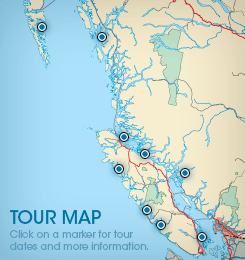
Paddler Code of Ethics
Observe Forest Service fire hazard ratings and Marine Park restrictions. When available, use existing containment structures for campfires. If you decide to have a fire, use only small sized driftwood.
Where toilets are not provided, bury waste using acceptable backcountry techniques. Pack out all other waste.
Groups should use only sites with sufficient existing camping space and never enlarge or create new sites. Please welcome others to share camping areas during high use periods.
When stopping on private land, take note of Indian Reserves (IR on charts) and contact the respective bands for permission to visit these territories. Try not to alienate landowners when stopping to rest on an attractive beach or point of land and keep within the allowed area (10 feet above the high tide line). Do not leave litter or make fires.
Enjoy being among the wildlife as you paddle, but be aware of your impact. Some shore birds, like oyster catchers, nest near the water and are easily frightened away. Know your birds or take a bird book with you. A pair of binoculars can make the world a lot closer!
Don't paddle too close to cormorant colonies, especially during nesting season, when your approach can scare off parents and expose their young to danger.
The same goes for seal haulouts. Seals seem particularly sensitive to kayakers and can be spooked by our approach. Use your binoculars and stay at least 100 meters away.
Beware of red tide warnings. Refrain from harvesting shellfish due to uncertainty over toxic blooms (red tide), and beware of areas leased for commercial shellfish growing. These are usually marked by shellfish lease signs.
.png)


